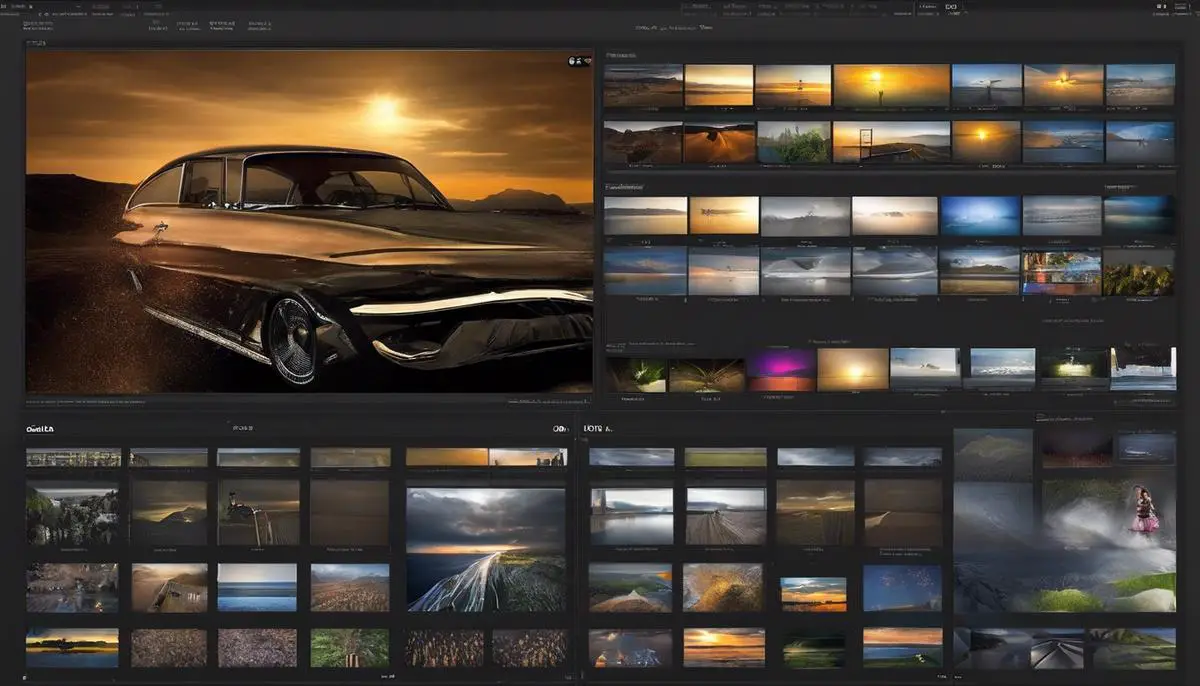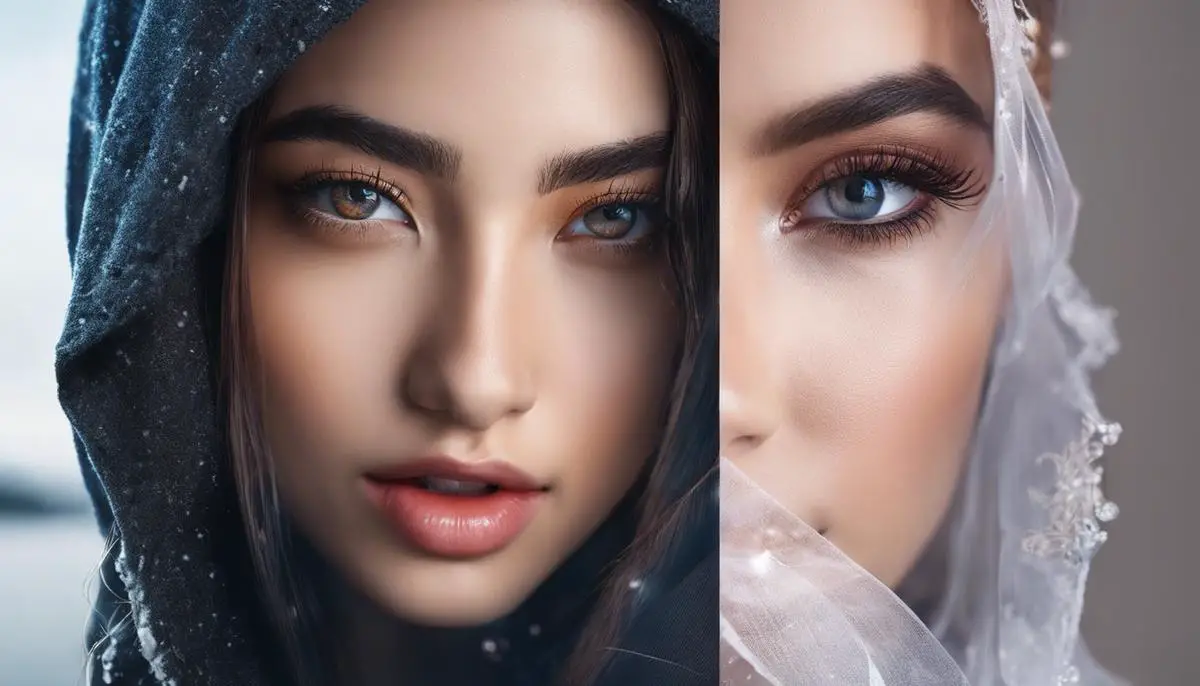In recent years, the rapid advancements in image synthesis and high-resolution image generation have been mainly due to one game-changing technology – Pix2Pix. As a branch of conditional Generative Adversarial Networks (cGANs), Pix2Pix has harnessed its potential to transform the field of high-resolution image synthesis. This piece of writing delves into the theoretical framework, technical nuances, and broader applications of Pix2Pix, drawing an elaborate comparison with other image synthesis techniques such as Super-Resolution GAN and CycleGAN.
Contents
Understanding Pix2Pix
Pix2Pix: Powering Ultra-Sharp Image Synthesis
Despite advancements in computer vision, generating realistic high-resolution images, such as portraits, from low-quality images or sketches, remained a tough nut to crack for long. Decoding this puzzle in 2016 was Pix2Pix, an ambitious image-to-image translation model. Developed by Berkeley artificial intelligence researchers, Pix2Pix presented a novel solution to the complex problem of synthesizing highly detailed images.
At the cornerstone of Pix2Pix is a generative model coupled with deep learning techniques. Furthermore, the key architectural element is what we call a conditional generative adversarial network, or cGAN for short. This technology embodies the essence of Pix2Pix’s innovative approach to image translation tasks.
So how exactly does Pix2Pix work? Instead of designing features or sophisticated image processing pipelines, as is traditional, the cGAN model is taught to learn a mapping from input to an output image. Surprisingly, it is as simple as providing a dataset of corresponding pairs of images, X-Y, where one image maps to another. The cGAN model will strive to generate images that cannot be distinguished from the original.
The Pix2Pix model has two primary components: the Generator and the Discriminator. In a classical game of deception, the Generator’s mission is to create artificial images so compelling that the Discriminator cannot tell they are not real. Meanwhile, the Discriminator’s role is to seek the truth – to discern which image is fake among two presented – real and synthesised by the Generator.
A critical crux that ensures Pix2Pix’s superior performance is an innovative loss function. This function manages and optimises the give-and-take between the Generator and the Discriminator. It combines two criteria: adversarial loss, followed by a unique twist, a ladder-style structure, also known as L1 loss. The L1 loss nudges Pix2Pix to focus on producing sharp and detailed constructs, even down to the minutest pixel.
External structures like buildings and static images benefit significantly from Pix2Pix’s application. However, the model falters when dealing with the inherent ambiguity of natural images. Humans, for instance, can be portrayed in countless poses or having various expressions, challenging the model’s predictive capacity.
In summary, Pix2Pix’s ingenuity lies in its ability to learn image-to-image translations driven by deep learning and cGAN technique, making detailed output imagery synthesis from low-resolution ones a reality. Notwithstanding its limitations, this technology continues to push the boundaries of what is possible in the field of image synthesis and deep learning.

Pix2Pix in High-Resolution Image Synthesis
Diving deeper into the heart of Pix2Pix, one immediately runs into its fascinating feature – the use of paired training data.
Every image pair contains an input and a corresponding output image. The specificity of these pairs allows the network to learn detailed mappings between images.
However, the secret weapon within Pix2Pix is the unique combination of its Loss Function and the use of Conditional GANs. The Loss Function in Pix2Pix is an optimized blend of two different kinds of measures: The absolute difference between corresponding pixel values known as L1 Loss, and the typical measure used in GANs, known as Adversarial Loss. The weighting between these two terms is what creates an incredible balance in the model. As the L1 term creates a high degree of similarity to the target images during training, the Adversarial Loss steps in to sharpen the output images, making them more realistic and higher resolution.
Turning our gaze to its underlying architecture, Pix2Pix utilizes a cGAN, wherein the generator receives not only a random noise vector (as in traditional GANs) but also additional auxiliary information in the form of conditional data. This data can be as simple as a class label or complex as an entire image. Herein lies the essence of its power, the ability of Pix2Pix to transform a drawn sketch into a comparatively realistic and detailed output. Thus, the network leverages the prowess of cGANs to perform these image-to-image translations.
A closer look at the Pix2Pix model reveals some important enhancements that allow it to achieve significant results. The primary among these is the incorporation of ‘U-Net’ based architecture in the generator model. U-Net, named for its U shape, is essentially a type of Convolutional Neural Network which excels at Biomedical Image Segmentation. By using this architecture, the generator in Pix2Pix is able to handle information at different resolutions, with the upside-down pyramid part of U-Net focusing on global structures and the right-side-up part delivering finer details.
Moving our lens beyond the model’s intricate details, we find various applications of Pix2Pix. Although this machine learning model has limitations in handling the ambiguity of natural images, it has exploited its prowess with static images and has shown true strength in style transfer, object transfiguration, and even visualization tasks.
In essence, Pix2Pix’s high-resolution image synthesis capabilities are made possible because of this brilliant assembly of cGAN architecture, balanced loss function, and U-Net based Generators. The fact that Pix2Pix is able to create high-resolution images from sparse sketches can be attributed to the relentless dedication of the scientific community to push the boundaries of technology, constantly enhancing our world with magic-like applications.

Comparison: Pix2Pix with Other Image Synthesis Techniques
As we delve further into the intricacies of Pix2Pix, one point that stands clear is its position in relation to other image synthesis techniques. Pix2Pix poses a unique confluence of existing deep learning techniques and innovative approaches that allow it to deliver superior image synthesis performance.
Firstly, it is noteworthy to mention that Pix2Pix operates using paired training data. Unlike many image synthesis techniques that function on unpaired data, Pix2Pix harnesses the information gleaned from matching input-output image pairs within the dataset. This utilization of pairs reduces the search space and boosts Pix2Pix’s performance in particular tasks such as facade-label to photo, or edges to handbags.
As we focus on Pix2Pix’s underlying architecture, a unique application of Conditional Generative Adversarial Networks (cGANs) and U-Net is witnessed. Unlike standard GANs used in other image synthesis techniques, cGANs in Pix2Pix ensure the generated image is not just plausible, but also fitting to the input image’s conditions. This deviation from the norm is coupled with the U-Net architecture, which allows for efficient inference and learning of contextual information from the input image. This blend results in a system that captures structural patterns, which are often lost in other methods.
Even the loss function within Pix2Pix is designed in a way that it captures a varied essence of image synthesis. It unifies the adversarial loss to enforce high-frequency correctness and L1 loss for low-frequency correctness. This combination provides an optimal balance, allowing Pix2Pix to generate photorealistic images rather than simply plausible ones, setting it apart once more from conventional methods.
However, achievements of Pix2Pix come with a layer of complexity too. The learning process, for instance, is highly reliant on a representative dataset. In the absence of a balanced and comprehensive dataset, the model may struggle to output adequately diverse images. Likewise, given the nature of the paired data needs in Pix2Pix, creating these exact dataset pairings can be challenging, particularly for complex real-world scenarios.
Moreover, while Pix2Pix’s image synthesis advancements are commendable, they predominantly excel in static domains. When extended to dynamic scenarios, such as video frames, the lack of temporal consistency can present a unique challenge, something that other models like CycleGAN and Video-to-Video Synthesis are more adept at handling.
In conclusion, Pix2Pix, with its unique strengths bolstered by its distinctive implementation of deep learning techniques and challenges inherent in those strengths, continues to be game-changer in the arena of image synthesis. As we learn more about Pix2Pix’s enormous capabilities, it’s exciting to deduce that this is just the beginning of an impressive journey towards unprecedented accomplishments in visual information understanding and representation.

Applications and Future Projections in Pix2Pix
Continuing from the established base, it is important to delve into the critical facets of function: leveraging Pix2Pix’s inherent qualities to serve practical needs in various sectors. The practicality of Pix2Pix rests not just in its technology but also on its capacity to deliver real-world transformation.
Industries like healthcare are witnessing substantial implications already. Consider dermatology, where medical professionals can use Pix2Pix to transfigure a dermoscopic image into a clinical one, thus expanding possibilities for diagnosis and disease identification. Similarly, in radiology, this technology can be used to convert MRI scans into CT scans, or vice versa, reducing patient discomfort and potentially harmful radiation exposure.
But the applications extend well beyond medical imaging. Take the fashion industry as an instance: designers can present sketches of their clothing designs which Pix2Pix can then translate into realistic images, enabling visualization of the final product in a more cost-effective and time-efficient manner.
Certainly, the media and entertainment industry can’t be left untouched by such versatile technology. Pix2Pix holds the potential to revolutionize animation and gaming, creating lifelike graphics from basic sketches. It can also be incorporated in video editing tools for upscaling low-resolution video footage.
In infrastructure design, Pix2Pix can interpret and translate 2D maps and plans into 3D town models or building structures, simplifying the visualization process for engineers and architects.
Moving to a broader realm, Pix2Pix’s use in satellite imagery can contribute to climate research, disaster management, and urban planning by enhancing the clarity and resolution of satellite images.
As we gaze into the future, the scientific road towards high-resolution image synthesis with Pix2Pix holds promise, albeit with challenges. For instance, while Pix2Pix can work wonders with paired images, producing paired data for more complex scenarios could be daunting. Further, it should be noted that dynamic scenarios wherein the input-output correlation alters over a period of time also pose a barrier for Pix2Pix.
Nonetheless, considering the inherent potential of this technology, researchers are certain these obstacles will be overcome. As the field of artificial intelligence evolves, even more effective models may emerge. However, as of now, Pix2Pix stands at the forefront of image synthesis, bearing profound impact and carving its peculiarity, thereby shaping the kick-off point for future advancements in this sphere.

As we have delved into the mechanics and real-world applications of Pix2Pix, it is evident that this revolutionary technology is reshaping image synthesis dramatically. From the healthcare industry to entertainment and even astronomy, the impact of Pix2Pix cuts across a variety of sectors. As we move forward, we have the potential for further advancements in this field—especially in high-resolution image synthesis. With continual research and application, Pix2Pix holds the promise of unprecedented progress and a future filled with exciting possibilities.

Emad Morpheus is a tech enthusiast with a unique flair for AI and art. Backed by a Computer Science background, he dove into the captivating world of AI-driven image generation five years ago. Since then, he has been honing his skills and sharing his insights on AI art creation through his blog posts. Outside his tech-art sphere, Emad enjoys photography, hiking, and piano.
